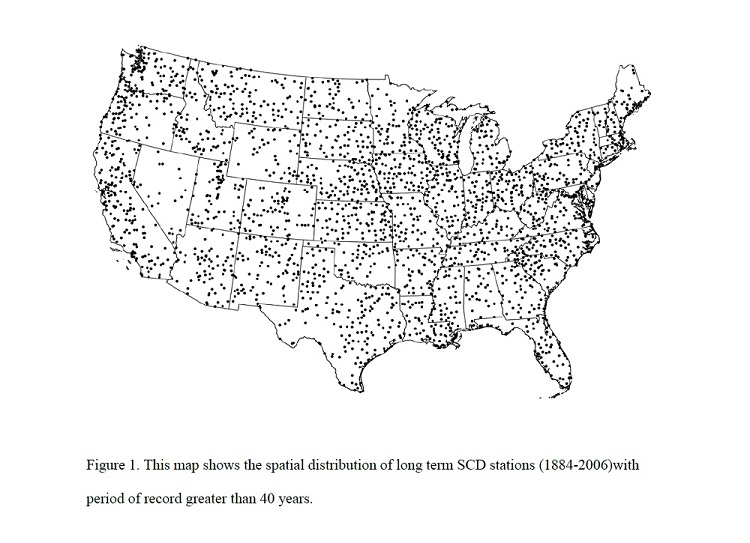
With climate being buzzed about now more than ever, the need for accurate and complete climate-related data is paramount.
"Many sectors are sensitive to weather and climate," said Ken Hubbard, professor of applied climate science in UNL's School of Natural Resources. "It is necessary to understand the past climate and its impacts on society in order to develop strategies for dealing with climate variability and climate change in the future."
However, thousands of scientists have obtained official climate data for use in their analyses only to face the problem of how to address missing data, which has led to inconsistent datasets from one study to another. In the past, estimates of missing data were many times biased and left the scientific results in question, Hubbard said.
Missing data, or data gaps, can occur inadvertently. For example, areal average precipitation is generally derived by a weighting of available stations. From year to year, the available stations may increase or decrease. As stations begin or cease operations, the areal averages may show a step change in the averages.
That's why demands for serially complete climate datasets – datasets that have employed unbiased methods to estimate missing data – are increasing both within and outside of the climate community.
"There is a need for this type of data in many sectors in order to characterize the climate risk and the climate resources for more informed decisions," Hubbard said.
A team of researchers at the High Plains Regional Climate Center and the National Drought Mitigation Center developed a serially complete dataset of U.S. temperatures and precipitation levels dating back to 1884. The dataset was prepared for the Drought Risk Atlas, housed at NDMC, which provides a wide range of decision makers with historical drought information and a web-based tool to visualize and assess their risk to drought.
"It has already been a huge factor in standing up our Drought Risk Atlas and many researchers are finding their way to our database and web interface at droughtatlas.unl.edu," said Mark Svoboda, climatologist and NDMC monitoring program area leader. "You will be hard-pressed to find a more pristine database housing such good long-term, daily, serially complete climate record for over 3000 locations across the United States."
In a paper published in the Journal of Service Climatology earlier this year, the researchers recount how they created the serially complete dataset.
"The goal of the paper was to document a new set of iterative procedures that were used to create a serially complete climate dataset," Hubbard said. "The methods are described with the intent of informing other scientists how to employ the methodology."
The paper's co-authors include Hubbard; Svoboda; Jinsheng You, research assistant professor of hydrology and climate; Martha Shulski, assistant professor of applied climate science and HPRCC director; and Mike Hayes, associate professor and NDMC director.
"The dataset is up and rolling and updated each year under the framework of HPRCC," You said. "This dataset is available to the public by placing special requests through HPRCC clientele services."
Hubbard said that in addition to drought analyses, the serially complete dataset can be used as input for a variety of areas including crop modeling, hydrological modeling, climate risk assessment and climate impacts. He detailed one example of how the dataset could be combined with a crop model, which is used to determine the growth and development of a crop when the appropriate weather, crop and soils data are input.
"Using the crop model together with the historical growing season weather data will allow an assessment of historical yields in relation to climate variability," Hubbard said. "Combining this information together with future climate scenarios will provide an assessment of how crop yields may be impacted by climate change. In the past, the missing weather data prevented such analyses to be completed."
— Mekita Rivas, Natural Resources